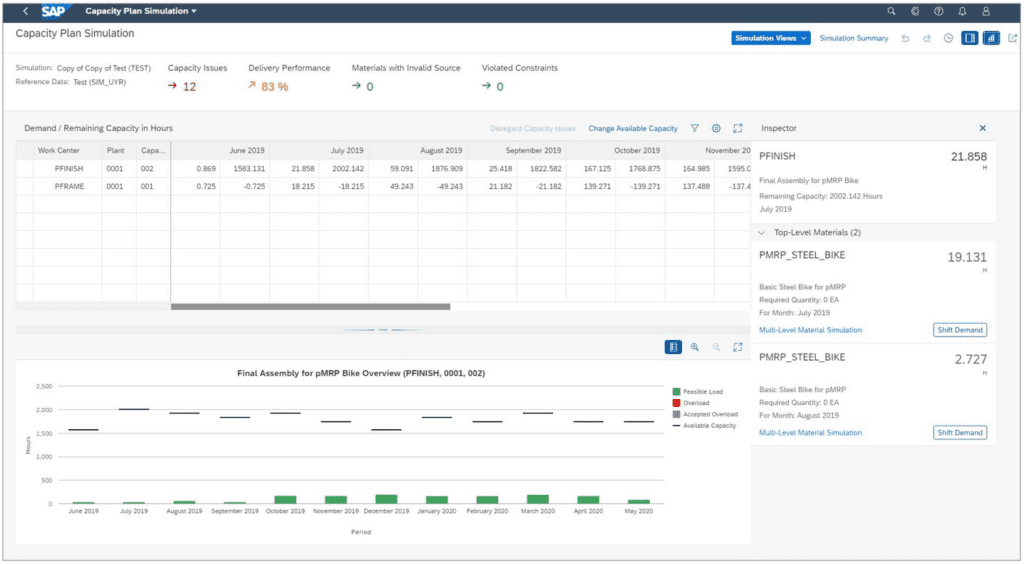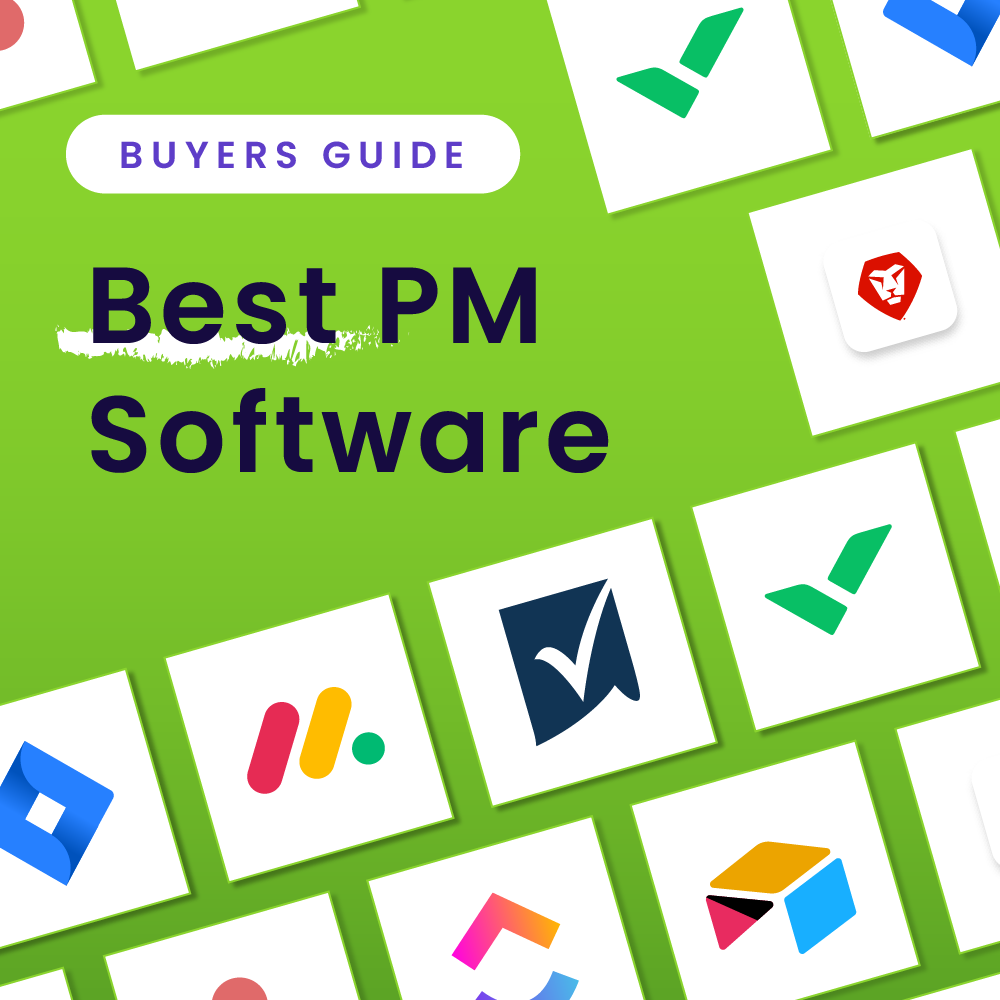Enterprise resource planning (ERP) systems optimize workflows and streamline essential business functions, such as supply chain management, accounting, customer relationship management (CRM), human resources (HR), and more. By tying essential functions together and linking all of a company’s data under one central platform, organizations can better manage company resources and keep a pulse on operations while eliminating data duplication. Here are our top picks for best ERP software based on our industry expertise and in-depth research.
| Our Pick | Best For | Pricing Starts At |
|---|---|---|
 Try Microsoft Dynamics 365 Business Central | Best All-Around Solution | Free to try • Paid plans starting at $70 per user/month See details |
 Try SAP S/4HANA Cloud | Best for Large Organizations | Free to try • 9.60 USD per capacity unit/month See details |
 Try Oracle Fusion Cloud ERP | Best for Data-Heavy Organizations | Free to try • Paid plans starting at $80 per user/month See details |
 Try Acumatica | Best for Flexibility | Demo only • Pricing available by request only See details |
 Try Sage X3 Cloud | Best for Integrations | Demo only • Pricing starts at $24,000 annually before implementation See details |
*Credit-based free trial, duration may vary
Methodology

Microsoft Dynamics Business Central: Best ERP System for All-Around Solution
Microsoft Dynamics Business Central is an ERP system designed to help businesses manage the data of multiple essential departments (such as finance, accounting, sales, and more) within one convenient application. With functionality that supports resource and project management, reporting and analytics, order processing, trackable work orders, and more, Microsoft Dynamics Business Central is a flexible solution for complete business management.

The business central dashboard from Microsoft Dynamics Business Central. Source: Microsoft, accessed July 2023.
Key Features
- Automatic audit trails – Microsoft Dynamics Business Central automatically assigns audit trails to every transaction with a detailed description to keep teams organized and compliant.
- Real-time inventory updates – Get updated in real time about the status of your inventory, including what items need replenishing and when.
- Timesheets – Timesheets allow teams to log and track project-specific data over time, such as employee hours worked or project budgets.
Pros & Cons
| Pros | Cons |
|---|---|
| •Easy to scale: Users can create their own customized applications and workflows right within the ERP system, making it easy to scale and adapt as your business grows. •Robust organization features: Automatically generated audit trails and production plans, advanced search features, and even the ability to leave notes and tags within orders and invoices, make it easy to manage essential information across multiple departments while simultaneously simplifying workflows. •Integration options: Seamless integration with many third-party applications and Microsoft products you rely on daily, such as Office 365 and Stripe payment processing. | •Unclear pricing: Unlike some vendors that offer a flat rate per user, Microsoft Dynamics Business Central requires users to invest in software licensing, cloud storage, and additional add-ons, such as a sales CRM function, Microsoft Power BI, and Microsoft Power Apps. •Requires extensive employee training: Team members within each department will need training on the solution during onboarding, as the learning curve is substantial. •Load times can be slow: At times, users can expect long load times, especially for search functionality. |
Why We Picked Microsoft Dynamics Business Central
Microsoft Dynamics Business Central is a powerful and adaptable ERP solution that can easily be scaled and customized to your business needs. Despite an initial learning curve, Microsoft Dynamics Business Central offers users easy-to-understand insights and reports from across your organization while helping you organize essential data. Holistic business insights and end-to-end business support make Microsoft Dynamics Business Central a top-rated solution for organizations of all sizes.
Read More: Best CRM Alternatives to Microsoft Dynamics 365

SAP: Best ERP Software for Large Organizations
Founded in 1972 by five former IBM employees, SAP has long been hailed as one of the most trusted and innovative brands in modern enterprise resource management. SAP S/4HANA is the 4th generation of SAP ERP products, designed specifically to solve complex business problems while managing large amounts of data. Users can choose to manage the software themselves in-house, let SAP manage it remotely through the cloud, or opt for a combination of both maintenance options. Competitive features (such as AI, chatbots, and IoT), automatic updates, and SAP’s reputation for ERP excellence make SAP S/4HANA a powerful solution for large organizations.

Capacity plan simulation from SAP S/4HANA. Source: SAP, accessed July 2023.
Key Features
- Service requests – Ability to generate service requests and tickets in the application, streamlining the repair process while promoting organization-wide visibility.
- Chatbots – AI-powered chatbots allow users to interact with the software in plain language while instantly receiving responses and assistance.
- AI-driven processing and data management – Across the application, SAP S/4HANA deploys the power of artificial intelligence to speed up workflows and process data more efficiently. For example, SAP S/4HANA can automatically process and categorize invoices, send out bills, provide real-time insights, predict machinery maintenance needs, and more.
Pros & Cons
| Pros | Cons |
|---|---|
| •Advanced analytics and predictive capabilities: Numerous features support organizations with enhanced insights and intelligent predictions, such as the ability to predict machine maintenance needs, projected inventory restock essentials, and more. •Great user support: The SAP team offers all users extremely responsive 24/7 support options, plus numerous education resources and training opportunities. •Excellent for improving business operations overall: SAP S/4 HANA’s extensive capabilities, including IoT and AI functions, make it a great holistic solution for companies needing to optimize workflows end-to-end. | •Implementation issues: Even for existing SAP users, making the shift to SAP S/4 HANA can be expensive, time-consuming, and complex. •Database limitations: SAP S/4 HANA can only run on the HANA database, excluding third-party databases such as Oracle, and making the overall setup process more complex. •Intense learning curve. SAP S/4 HANA is complex, with a considerable learning curve for new users due to extensive functionality. |
Why We Picked SAP S/4 HANA
SAP S/4 HANA is a dynamic and capable ERP solution for organizations wanting to improve their efficiency while gaining a wider scope of insights into everyday operations. For teams with large amounts of data, SAP S/4 HANA has the power to manage high volumes of data while extracting intelligent insights and automation essential work functions. Enhanced capabilities such as IoT and AI functions set SAP S/4 HANA apart from the competition when it comes to addressing the needs of large organizations.

Oracle: Best ERP Software for Data-Heavy Organizations
As one of the oldest and most trusted brands in enterprise resource planning, Oracle has built a reputation for ERP excellence, with brands such as Zoom and LinkedIn reportedly relying on the platform. Oracle ERP Cloud is a complete ERP solution that enables teams to manage cross-departmental work at a high level while extracting valuable data insights and automating work processes. As a cloud-based system, it lets users instantly make updates and customizations and receive support while housing large amounts of data.

Example of a dashboard view in Oracle ERP Cloud. Source: Oracle, accessed July 2023.
Key Features
- Real-time KPI dashboards – Keep tabs on important data and uncover insights across your organization in real-time with KPI dashboard reporting.
- Fully cloud-based system – Oracle ERP Cloud makes it easy to make adaptable customizations and changes remotely without an on-site administrator.
- Reliable updates – Oracle provides software updates on a reliable schedule, launching every 90 days to keep the product up to date on the latest trends and developments.
Pros & Cons
| Pros | Cons |
|---|---|
| •Excellent financial management functionality: Users speak highly of Oracle’s financial management functionality, with strong accounting and budgeting features. •Continuous improvements: Because Oracle releases product updates every 90 days, users can rely on a product that is continually improving. •Integration with other Oracle products: As part of the Oracle software family, Oracle ERP Cloud integrates seamlessly with other Oracle products. | •Lack of transparent pricing: Oracle does not publicly list the pricing for Oracle ERP Cloud, which can make it hard for teams to predict if the solution fits within their budget. •Lack of customization: The Oracle Accounting Hub specifically lacks many of the customization features users seek out from other parts of the platform. •Occasional delays and long load times: Users have reported occasional software freezes and long load times. |
Why We Picked Oracle ERP Cloud
Oracle ERP Cloud is a trusted and flexible solution for organizations of all sizes. For data-heavy users in particular, Oracle ERP Cloud is a great option because of its ability to not only house large volumes of data but also to easily let users access and understand insights about that data at a company-wide level. Moreover, with the system’s cloud-based functionality, data-heavy teams can access data instantaneously from wherever they are.
Read More: Oracle NetSuite ERP Pricing & Features

Acumatica: Best ERP System for Flexibility
Acumatica is a highly flexible and customizable ERP software solution for growing teams. With industry-specific editions available, users across a wide range of industries can access personalized ERP functions for managing accounting, business financials, HR operations, day-to-day work functions, and more for end-to-end business support. Public and private cloud options allow users to choose to host the platform in-house or remotely through the cloud.

Example of a personalized dashboard for a warehouse manager. Source: Acumatica, accessed July 2023.
Key Features
- Role-based views and dashboards – Users can focus on the information most relevant to their position with role-based views and personalized dashboards.
- Customization and personalization features – Acumatica offers users the ability to personalize their ERP experience with low code/no code modification capabilities, a web SDK, and documented APIs.
- Cloud-based mobile app – Acumatica includes a mobile-friendly application for easy and secure work on the go.
Pros & Cons
| Pros | Cons |
|---|---|
| •Personalized editions available: Industry-specific versions of Acumatica make it easy for teams to personalize their ERP experience based on their unique needs. •No per-user fees: Unlike many other ERP software solutions, there are no per-user fees, so you can avoid price increases as your organization grows. •User experience: Compared to many other ERP offerings, users commend Acumatica’s intuitive dashboard and sleek user experience. | •No free trial or version: Users can only access a demo of Acumatica; no free trials or editions are offered at this time. •Cloud-based use only: Acumatica does not offer any on-premise hosted software versions, which can be a drawback for organizations that prefer on-premise hosting. •Lack of third-party integrations: Acumatica offers few options for third-party integration, which can be problematic for users who want to integrate multiple software solutions within Acumatica. |
Why We Chose Acumatica
Acumatica is a flexible and highly customizable solution that pairs well with growing organizations because of its scalability and robust functionality. Individual role-based views and dashboards, industry-specific editions, and numerous internal customization features make Acumatica a reliable ERP solution for teams who want a greater level of control over their data and usability experience.

Sage X3: Best ERP for Integrations
Sage is a British software vendor that specializes in creating business management and accounting software for businesses of all sizes. Sage X3 is a comprehensive ERP solution for midsize businesses that want greater visibility across their accounting, financial, and operational functions. With numerous customization options and options for third-party integrations, Sage X3 packs significant value into one streamlined ERP platform.

Project management functionality from Sage, including a timeline view. Source: Sage Software Solutions, accessed July 2023.
Key Features
- Project management features – Sage X3 gives users the ability to manage project deadlines, outline project goals, and even track project progress through a timeline view.
- Complete Customer Relationship Management (CRM) functionality – Users can take advantage of full CRM functionality built-in, with customer campaign management, including marketing campaign planning and management.
- Supply chain management support – Sage X3 has extensive functionality to support the supply chain process from beginning to end, including purchase planning, ordering, requests, purchase orders, requests for proposals, and more.
Pros & Cons
| Pros | Cons |
|---|---|
| •Integration options: Compared to other vendors, Sage X3 offers a wide variety of easily accessible third-rd party integrations to host all of the tools you need within the platform. •Simple and streamlined dashboards: Sage X3 users often compliment its user-friendly dashboard and simple dashboard views for easy data interpretation and insights. •Project management features: Sage X3 offers functionality to support task tracking and general project management, which can be uncommon for ERP software. | •Configuration challenges: It can be complex and time-consuming to fully harness the power of Sage X3’s customization options. •Paid add-on features: Certain add-ons, such as for detailed reporting insights, are an extra cost. •Lack of adequate user support: Some users have cited a lack of live support on the company site and slow wait times. |
Why We Chose Sage X3
Sage X3 is a scalable and feature-packed ERP solution for teams that require flexibility, especially surrounding third-party integrations. For mid-to-large-size businesses looking to streamline workflows and consolidate work data in a single place, Sage X3’s diverse features, including project management support and full CRM functionality, add value while keeping your tech stack manageable.
Read More: 10 Best Project Management Software
ERP Hosting Options & Types
Enterprise Resource Management Systems are complex systems that include extensive functionality to support your business’s operational needs at every step of the journey. Accordingly, ERP solutions require space (whether digital or physical) to house data and essential operational components.
While many ERP users will choose to select a cloud-based or on-site hosting platform, some users may prefer a hybrid solution that incorporates elements of both options. Hybrid-based hosting options host more sensitive information on-premise securely while other information is uploaded remotely to the cloud.
Benefits of ERP Software
ERP software can add tremendous value to your organization while allowing greater visibility into business processes at every level. Here are a few of the benefits of investing in an ERP solution for your business:
Increased Visibility into Business Processes
By definition, ERP software helps provide a deeper level of visibility into the systems and processes that your business is comprised of. For smaller organizations, ERP software can be a great way to keep tabs on every area of your business as you grow. For larger organizations, ERP solutions can be essential in helping you manage the essentials, from financials to accounting functions and more.
Enhanced Insights
ERP software can also help you extract meaningful trends and insights about your business, how it functions, and areas you can improve. Because these insights are typically updated in real time, you can keep tabs on every aspect of your operations while leveraging real-time insights.
Document & File Management
Regardless of the size of your operation, you can’t risk letting key files get lost in the shuffle. One of the main benefits of ERP systems is secure data storage and file management, as many ERP options offer extensive storage and security options.
Increased Scalability
Scaling your organization can be a challenge if your business’s tech stack lacks the flexibility to grow with you. Luckily, ERP systems as a whole are designed to scale alongside your business, whether you need additional capabilities, add-ons, or users incorporated into your system over time.
Challenges of ERP Software
While ERP software can add undeniable value to your business, it can also come with some complexities and requirements. Here are some of the challenges you can expect when implementing ERP software:
Financial Investment
ERP systems are an investment in the future of your business—and that requires financial investment as well. A 2022 meta-analysis by SoftwarePath examined over 1,300 ERP software solutions and found that, on average, the projected budget for a single ERP user can top $9,000 monthly. ERP-curious businesses should also be aware of the additional costs associated with establishing, implementing, and maintaining the system, which can be significant.
Data Migration
Whether you’re a new ERP user or have an existing system in place, migrating to a new ERP solution means transferring data—and a lot of it at that. Have a plan in place before data transfer begins and be prepared to invest a significant amount of time and manpower into getting data safely transferred to its new home.
Training and Team Integration
Regardless of the provider you select, any ERP system you select will come with some degree of learning curve. Before selecting a software solution, be sure to plan ahead and, if needed, establish a team (such as executives, project managers, and IT staff) to help aid in integration and employee training.
Selection Struggles
Finding the correct ERP solution for your organization can be overwhelming and time-intensive. Having a clear understanding of your business needs and preferred features before diving into the selection process can be a great way to get ahead of the curve and limit stress.





